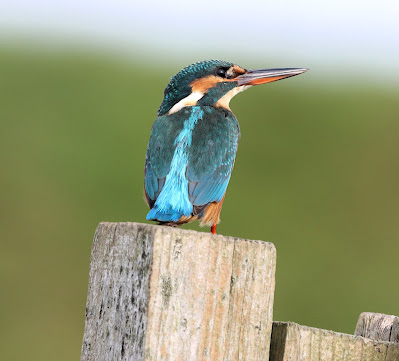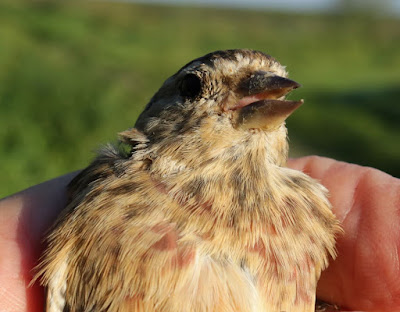As promised, and despite my being poorly with a dose of Common Cold, saved only by a glass or two of ouzo held back in case of serious illness, here it is.
My personal and early look at Terns of North America; A Photographic Guide by Cameron Cox, due for release on 24 October 2023.
Terns of North America - Princeton Press
Let’s not beat about the proverbial bush. This is a simply stunning book that every birder should own - an essential identification guide to not just North American terns, but the noddies and skimmers that in recent years have crossed the Atlantic to appear on the British List with increasing regularity.
The book follows the expected traditional route of an Introduction from Pages 1 to 19 followed at Pages 20 to 197 by the Species Accounts. 208 Pages in all.
Contents - Terns of North America - Princeton Press
The author’s Introduction quickly puts the reader at ease with the assertion that despite perceptions by some birders, terns do not present extreme ID challenges. He reassures the reader that difficult and real ID distinctions are few and far between, and mainly within larger Sterna terns.
The section Tricky Thalasseus is especially welcome in dealing with similarities and differences between the North American Sandwich Tern, Eurasian Sandwich Tern and the so called Cabot’s Tern.
Terns of North America - Princeton Press
Terns of North America - Princeton Press
Terns of North America - Princeton Press
The individual species accounts are found together, grouped under logical headings rather than in pure scientific order, a sequence that might still upset the purists. But this is an entirely acceptable device that makes for a highly functional field guide, one that will find its way into a backpack for that trip to the shore where terns and their allies congregate.
For instance, a glance through sections entitled Large Terns, Crested Terns, Medium Sized Terns or Sterna Terns will quickly sort the possible from the unlikely. Equally, Marsh Terns, Pelagic Terns and Upland Terns can be found in their own respective compartments. As one might expect, Skimmers and Noddies can be found in a section all of their own.
Terns of North America - Princeton Press
Terns of North America - Princeton Press
Terns of North America - Princeton Press
Within the pages are a small number of photo quizzes that I found quite difficult based upon my limited experience of North American terns, questions that those on the US side of the Atlantic might solve more easily. In any case, the answers and explanations can be found in time honoured fashion in the final pages. There is a very useful bibliography at Pages 198-201 followed by a mercifully short Index.
There are 350 high quality illustrations, mostly superb photographs packed into 200 or so pages of Terns of North America, photographs that take tern ID to another level and demonstrate once again how quality bird photography is the future for field guides focused on birds.
The sheer strength of the book lies in the many sensational photos of terns. Terns at rest, terns in flight, flocks of terns, mixed terns, mottled terns, immaculate terns, grey terns, black terns, carrot billed terns or banana billed terns. They are all in here where bird photography crosses into art and thrills the reader into discovering more about this rather special family of beautiful and elegant birds.
I found myself browsing the many photographs so as to simply enjoy the experience and forgetting to read whole chunks of text. Stand out images included Aleutian Terns at pages 152/153, a Black Tern at 135 followed by a whole set of similar joys and then the fabulous Sandwich Tern in flight that opens the Species Accounts.
As I browsed the hundreds of photos it came increasingly obvious just how many had been taken in The Sunshine State of Florida, that Beachy Hotspot of terns and skimmers. I know one or two birders in FL who right now will I suspect be clicking that link to Princeton, itching to get their hands on a copy of Terns of North America.
The book is a great value for money prospect for cash-strapped birders who are often notoriously reluctant to part with their dosh, in this case for a meagre 19 or 20 species that already feature in guides they own. To not invest in this inexpensive book would be a mistake because it is bang-up-to-date in its detailed and simplified approach to sometimes challenging tern ID, whereby to head out onto a tern-crowded beach without might be a recipe to fail.
Go on, treat yourself. At £22 or $27.95 this book is another winner from Princeton.
Price: $27.95/£22.00
ISBN: 9780691161877
Published: Oct 24, 2023
Pages: 208
Size: 7.5 x 9.5 in.
350 colour illus.
Back soon with news, views and photos on Another Bird Blog.







































.JPG)










.JPG)




.JPG)







.jpg)











